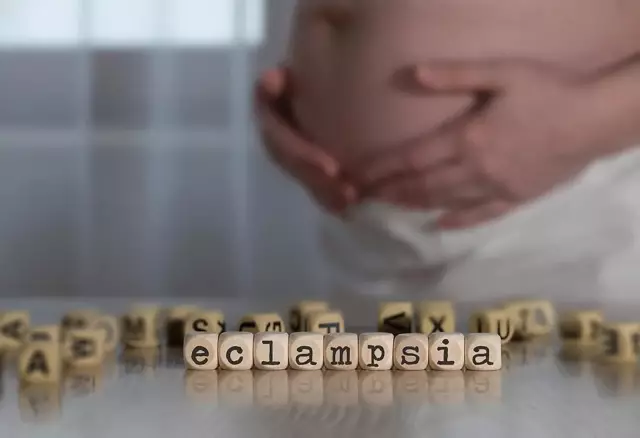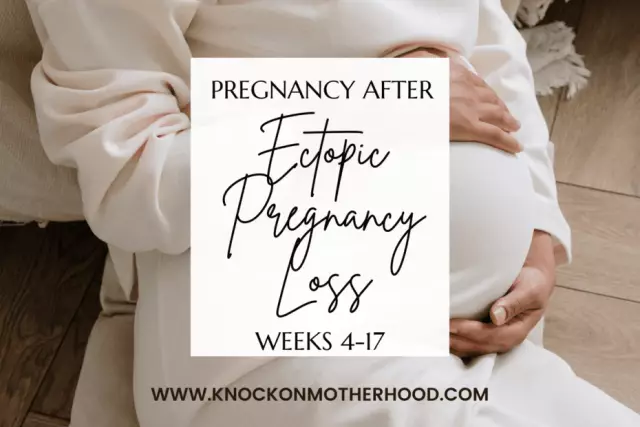- Author Rachel Wainwright [email protected].
- Public 2023-12-15 07:39.
- Last modified 2025-11-02 20:14.
Eclampsia

Eclampsia is a late form of gestosis, characterized by a sharp rise in blood pressure, which threatens the life of the mother and fetus. Gestosis is a violation of the normal course of pregnancy, manifested by a violation of the functioning of body systems. Eclampsia can develop before, during, and after pregnancy.
Eclampsia: causes of the development of the disease
Eclampsia is the most severe form of gestosis, characterized by impaired activity of the central nervous system and with untimely relief of symptoms - coma and death of the mother and fetus. Currently, there is no consensus on the causes of the development of eclampsia. Eclampsia is not an independent disease, but is a complex combined form of gestosis. There are about 30 theories of the onset of the condition, among which the viral nature of the disorder is also distinguished.
Among the main reasons for the development of eclampsic conditions are:
- Gene defects;
- Infections;
- Thrombophilia.
To date, there is not a single test that can reliably predict the development of eclampsia in pregnant women. Eclampsia mainly develops after 22 weeks of gestation, which is due to intrauterine development of the fetus. Until this time, the fetus is not able to survive outside the mother's womb due to the incomplete formation of the higher structures of the brain. At 22 weeks of development, neurospecific protein compounds first appear in the fetus, which, when penetrating through the damaged placental barrier, cause systemic immune inflammation, characterized by vasospasm. This explains the development of eclampsia against the background of placental insufficiency (a condition caused by dysfunction of the placenta).
The state of eclampsia is preceded by preeclampsia, which is characterized by high blood pressure, the presence of protein in the blood, nausea, headache, and impaired reflexes. Preeclampsia requires medical supervision and timely correction of symptoms. The only effective treatment for eclampsia is delivery.
Eclampsia is a specific damage to the brain during gestosis, when:
- Critical decrease in cerebral circulation;
- Cerebral ischemia;
- Loss of self-regulation of cerebral circulation;
- Cytotoxic cerebral edema;
- Disruption of cellular ionic hemostasis, the functioning of brain structures, the release of toxic neurotransmitters and stress genes that provoke the onset of unconsciousness, convulsive syndrome, coma of a pregnant woman.
These factors explain the features of the development of eclampsia:
- The rarity of occurrence (the condition manifests itself in only 5% of pregnant women);
- Lightning speed of development of symptoms and critical conditions of a pregnant woman.
The algorithm for the development of eclampsia is as follows:
- Long-term gestosis (often characterized by a severe course);
- Preeclampsia (optional)
- Short-term loss of consciousness;
- Tonic, clonic seizures;
- Convalescence (after delivery).
In some cases, eclampsia can have very serious consequences, such as coma, functional failure of the kidneys, liver, lungs, or, in extreme cases, brain death. During an eclampsic seizure, fetal hypoxia and death may develop.
Eclampsia of pregnancy: risk factors
There are certain risk factors for the development of eclampsia in pregnant women, among which are:
- Early, as well as late (after 40 years) first pregnancy;
- Family history of eclampsia;
- Obesity;
- Multiple pregnancy;
- Chronic diseases (diabetes, hypertension, kidney and cardiovascular diseases, antiphospholipid syndrome);
- The time interval between childbirth is 10 years or more.
There are also a number of factors provoking the development of eclampsia in pregnant women:
- Improper nutrition;
- Weakened uterine circulation;
- Violation of the water-salt balance of the pregnant woman's body.
Postpartum eclampsia: the likelihood of developing
The likelihood of developing eclampsia in a pregnant woman is:
- During pregnancy - from 67 to 75%;
- In childbirth - up to 25%;
- In the postpartum period - 1-2%.
As a rule, postpartum eclampsia develops in the first 48 hours after childbirth, after the end of this period, the risk of developing the condition is minimal. Postpartum eclampsic state is due to hemodynamic, metabolic, hypoxic disorders of the body during gestation. The symptoms of eclampsia after childbirth are similar to the symptom complex of prenatal and birth eclampsia. Also, the onset of postpartum eclampsia can be triggered by pain shock and external factors (bright light, loud sound).
Eclampsia symptoms
The main symptoms of eclampsia are:
- Small muscle contractions;
- Tonic muscle cramps of the skeletal muscles;
- Clonic spasms of the muscles of the trunk;
- Short-term loss of consciousness;
- Cyanosis (blue discoloration of the skin and mucous membranes);
- Eclampsic coma.
Other symptoms of eclampsia are also irregular breathing (development of asphyxia), foam at the mouth, often with blood impurities.
Signs of an impending seizure of eclampsia are:
- Increased sleepiness, weakness;
- Nausea, uncontrolled vomiting, not due to other reasons;
- Increased blood pressure;
- The development of edema;
- Visual impairment (blurred vision, "flies" in front of the eyes);
- Proteinuria (presence of protein in the urine).
Eclampsia can manifest itself as one long seizure or a series of short-term seizures.
Eclampsia treatment: prognosis and methods
The prognosis in the treatment of eclampsia is determined by a number of the following factors:
- The severity of the condition of the pregnant woman (pronounced edema, urine composition, blood pressure level);
- The frequency of the onset of seizures, their severity;
- Timeliness of assistance and relief of seizures;
- Complications caused by seizures.

If eclampsia is suspected in a pregnant woman, blood pressure, maternal and fetal hemodynamics are monitored continuously. Patients are shown a salt-free diet.
The cessation of seizures, increased urine flow is a good sign, which will postpone the need for immediate delivery.
An increase in temperature, arrhythmia, a sharp decrease in blood pressure after hypertension are indications for immediate delivery.
The main treatment for eclampsia is to alleviate the symptomatic complex:
- Relief of a seizure and elimination of vascular spasm;
- Pressure normalization;
- Blood oxygenation;
- Dehydration therapy to help increase urination and reduce swelling.
In case of an eclampsic attack, intensive therapy is used, which is in the nature of cardiopulmonary resuscitation in combination with therapy aimed at restoring brain function, which makes it possible to prevent repeated attacks.
The decision about delivery is made depending on the severity of gestosis and the patient's condition during an eclampsic seizure.
YouTube video related to the article:
The information is generalized and provided for informational purposes only. At the first sign of illness, see your doctor. Self-medication is hazardous to health!






